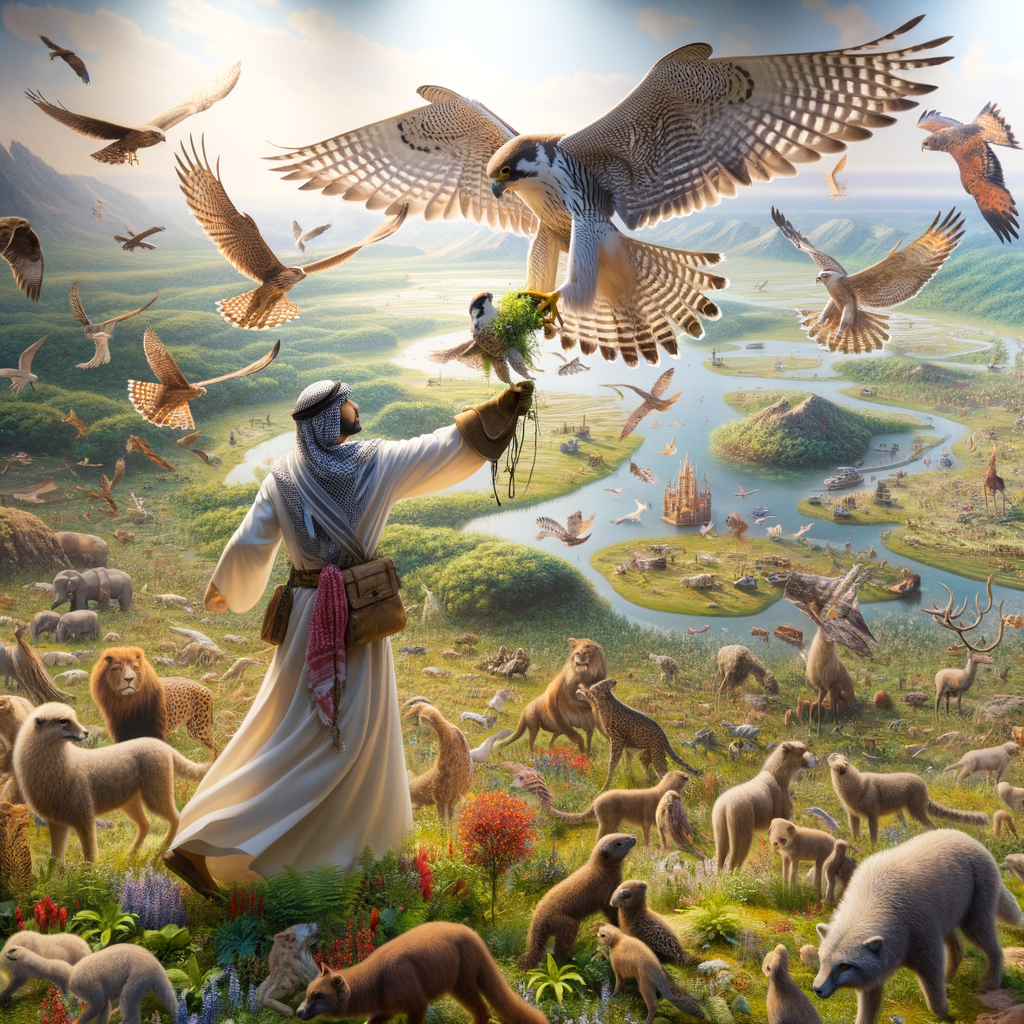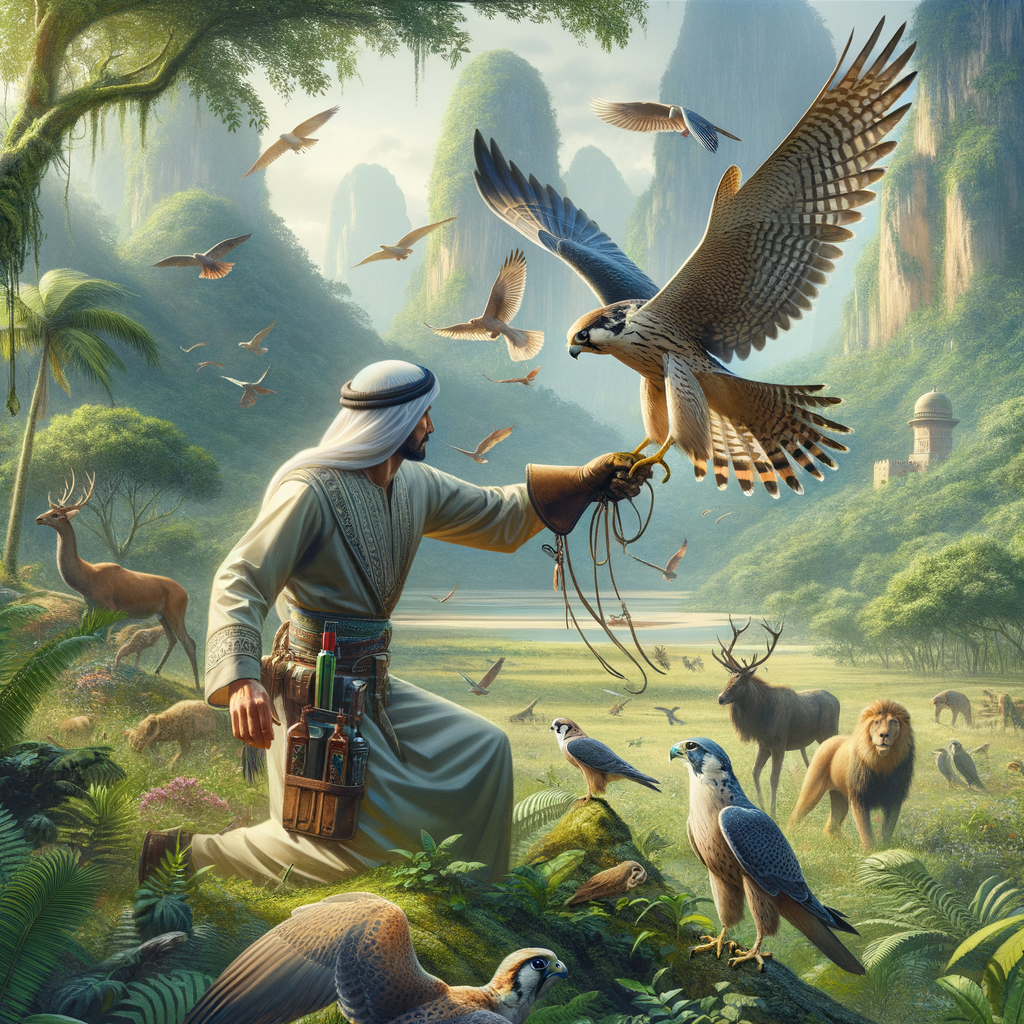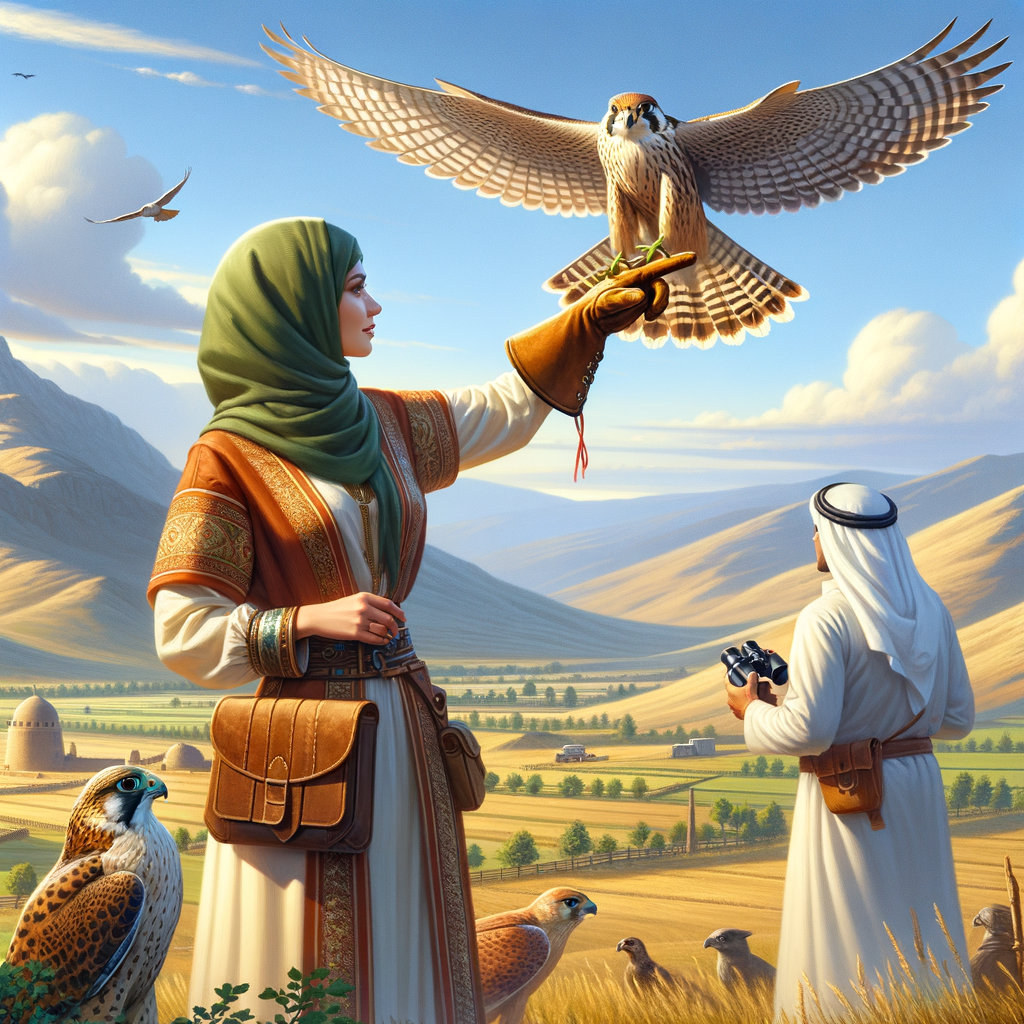Key Highlights on Falconry and Conservation
- Importance of Falcons: Falcons play a crucial role in maintaining the balance of the ecosystem.
- Conservation Efforts: Falconry helps in preserving these majestic birds by promoting careful breeding and release programs.
- Educational Value: Engaging in falconry increases awareness and understanding of wildlife conservation.
- Connection with Nature: Practicing falconry strengthens the bond between humans and the environment.
- Sustainable Practices: Falconry supports sustainable hunting practices, ensuring that natural resources are not depleted.
- Rescue and Rehabilitation: Many falconry programs are involved in rescuing injured birds, rehabilitating them, and sometimes releasing them back into the wild.
- Cultural Heritage: Falconry is a part of human history and culture, passed down through generations and promoting respect for nature.
The Role of Falconry in Conservation: An Irish Tale Unfolds
Welcome to the fascinating world of falconry, where ancient traditions and modern conservation efforts come together in a beautiful dance. Imagine you’re standing on the lush, emerald hills of Ireland, where stories of brave knights and majestic hawks fill the air. Just like those knights needed their trusty birds of prey to protect the land, our planet now depends on falconry to help safeguard endangered species and maintain the balance of nature.
At Learn Falconry, we believe in the power of these majestic birds to teach us invaluable lessons about wildlife conservation. In this article, we’ll take you on a journey through the rich history of falconry, its vital role in protecting our environment, and how you can be part of this meaningful mission. Picture each step as a chapter in an old Irish legend, where every action you take has the power to create a thriving, harmonious world for both humans and wildlife.
So, are you ready to discover how the ancient practice of falconry is shaping the future of conservation? Keep reading and let us guide you through this enchanting tale.
The Role of Falconry in Conservation Efforts
Falconry conservation is not just about training and flying birds of prey; it’s also about protecting wildlife and their habitats. Falcons and other raptors play a significant role in the ecosystem, and through falconry, many efforts have been made to ensure their protection and survival.
Falconry for Wildlife Protection
Falconry for wildlife protection has a long history. By practicing sustainable falconry techniques, falconers help maintain the balance in the ecosystem. Falcons are apex predators and play a role in keeping populations of smaller birds and mammals in check. This helps prevent overpopulation and ensures biodiversity.
In addition, many falconers participate in programs that focus on the rehabilitation and reintroduction of falcons into the wild. These programs are crucial for species that have been threatened or endangered. For example, peregrine falcons have benefitted tremendously from these conservation efforts. (*Learn more about the different species of falcons here).
Conservation Efforts by Falconers
Falconers are often at the forefront of conservation efforts. They collaborate with scientists and wildlife organizations to conduct research, monitor populations, and protect habitats. Through these partnerships, falconers gather data that helps understand the challenges faced by birds of prey and develop strategies to mitigate them.
Some falconers engage in captive breeding programs to boost the numbers of endangered species. These birds are then released into the wild to strengthen their populations. (*Discover more about falconry techniques here).
Falconry and Ethical Practices in Conservation
Falconry conservation is governed by strict ethical guidelines to ensure the welfare of the birds. Ethical falconers follow these guidelines diligently to ensure that their practices benefit both the falconry community and the environment. This includes proper training, providing appropriate nutrition, and ensuring the birds’ health and well-being. (*Learn about falcon health and nutrition here).
Falconry Education and Public Awareness
Educating the public about the importance of falconry in conservation is another critical aspect. Many falconers conduct demonstrations and participate in public speaking events to raise awareness about the role of falconry in wildlife protection. This helps in garnering support for various conservation programs and initiatives.
The Legal Framework of Falconry Conservation
Legal regulations play a vital role in falconry conservation. Falconers must adhere to these laws to ensure that their practices are sustainable and ethical. These include obtaining necessary permits, abiding by local and international conservation laws, and participating in regulated breeding programs. (*Explore the legal aspects of falconry here).
By integrating these practices into their daily routines, falconers can significantly contribute to wildlife protection and conservation efforts. For those interested in the deeper connection between falconry and conservation, more detailed information can be found on our dedicated section on falconry and conservation here.
Discover the fascinating history and rich traditions of falconry, as well as the modern practices and innovations that continue to shape its role in conservation efforts today. Whether you are a seasoned falconer or a beginner, there is always more to learn about how falconry can contribute to a sustainable future for wildlife. Keep exploring and deepen your understanding with the resources provided by Learn Falconry.
Role of Falconry in Conservation Efforts
Peregrine Falcon Conservation
- Impact on Wild Populations: The take of young Peregrine Falcons for falconry in Montana is expected to have no negative impact on wild populations. This means that using young birds for falconry doesn’t harm their overall numbers in the wild. The practice continues to be allowed.
- Take of Immature Falcons: The extraction of immature Peregrine Falcons is minor. For example, no more than 5 birds are taken in any given year. This process should be treated like other legal falconry species.
Birds of Prey Conservation
- International Forum: The 1st Falcon Day International Forum in Vladivostok will discuss methods for conserving rare bird species such as the gyrfalcon. The forum will also focus on how birds of prey can be used for practical purposes.
- Legal and Technological Approaches: Discussions will include the legal basis for conserving and restoring birds of prey. They will also consider how modern technologies can prevent population decline.
Practical Conservation through Falconry
- Maintaining Healthy Populations: Falconry is recognized as a practical tool for conservation. It helps maintain healthy survival rates of young birds and promotes new recruits when mortality happens at a nest site.
- Environmental Assessment: According to the USFWS Environmental Assessment, falconry has no negative impact on the wild populations of raptors or their prey.
Wildlife Protection Examinations in 2024
- License Examinations: Examinations for falconry licenses, wildlife rehabilitator licenses, and leashed tracking dog handler licenses are scheduled for April 12, 2024. Candidates must register by April 10, 2024.
- Falconry Licenses: Available for New York State residents who meet certain requirements, including passing a written exam with a score of 80% or higher and being at least 14 years old. A five-year license costs $40.
- Wildlife Rehabilitator Licenses: Available for those passing an exam with a score of 80% or higher, being at least 16 years old and being interviewed by DEC Regional wildlife staff. There is no cost for this five-year license.
- Leashed Tracking Dog Handler Licenses: Available for those passing a written exam with a score of 80% or higher and possessing a valid New York State hunting license. The five-year license costs $50.
Additional Efforts in Conservation
- Falconry as a Conservation Tool: Falconers support modern wildlife conservation and biological research efforts. They work to protect habitats, reduce electrocution threats, and increase nesting substrates for raptors.
- Peregrine Falcon Recovery: Peregrine falcons have made a significant comeback from near-extinction due to DDT. They are now less threatened, and banding efforts are likely to cease.
- Partnerships: Falconry organizations engage in partnerships to protect raptors and their habitats. For example, they track rehabilitated golden eagles using satellite telemetry.
Study Materials and Support
- Study Guides: The DEC provides study guides and examination manuals at no cost for individuals pursuing falconry, wildlife rehabilitator, and leashed tracking dog handler licenses.
National Biodiversity Data Centre Strategic Plan 2024-2028
- Improving Knowledge: The plan aims to enhance understanding of Ireland’s biodiversity, support evidence-based conservation actions, and promote the use of biodiversity data for science and decision-making.
- Volunteer Network: A network of volunteers monitors biodiversity at over 1,700 sites, offering insights into changing biodiversity trends.
World Database on Other Effective Area-based Conservation Measures (WD-OECM)
- Comprehensive Inventory: The April 2024 release includes over 872 records, offering detailed information on conservation areas worldwide.
Biodiversity Data Standards and FAIR in Prototyping Biodiversity Digital Twins
- Innovative Approaches: This project merges advanced modeling with data streams to enhance natural resource and biodiversity management.
- Data Integration: It aims to integrate diverse data streams and apply data standards to ensure FAIRness across digital twins.
Emergent AI Contributions to Biodiversity Data & Data Standardisation
- Exploring AI: AI technology is being examined for its potential to standardize and improve biodiversity data processes. Fields of interest include AI-based data extraction, metadata management, and developing ontologies for biodiversity data.
New Approach to Tracking Conservation
- Comprehensive Inventory: An international study introduced a cataloging method focusing on local data and expertise. This revealed diverse conservation areas, suggesting practical recommendations for stakeholders.
Nationally Designated Areas Data Collection 2024
- Data Reporting: The collection process includes data on Other Effective Conservation Measures (OECMs) and strictly protected areas.
- Agility in Policy Response: The data will be used to track progress towards protected area targets under the EU Biodiversity Strategy 2030.
Relevant Data Tables
| License Type | Exam Date | Age Requirement | Cost | Validity Period |
|---|---|---|---|---|
| Falconry License | April 12, 2024 | At least 14 years | $40 | 5 years |
| Wildlife Rehabilitator License | April 12, 2024 | At least 16 years | No cost | 5 years |
| Leashed Tracking Dog Handler License | April 12, 2024 | Not specified | $50 | 5 years |
The Vital Role of Falconry in Conservation
Falconry is not just a thrilling sport; it plays a big part in conserving our environment. From helping to keep Peregrine Falcon populations stable to supporting modern wildlife conservation efforts, falconry demonstrates a unique way of connecting with and protecting nature. Important events like the 1st Falcon Day International Forum shed light on new conservation strategies and technologies to safeguard birds of prey.
In 2024, new actions and partnerships show just how critical falconry is for conservation. This includes exams for licenses, such as falconry and wildlife rehabilitator licenses. These licenses are essential as they empower more people to engage actively in conservation efforts. Programs like satellite telemetry tracking of golden eagles and preventing electrocution threats further highlight how modern technology and falconry can work hand-in-hand for the good of our wildlife.
Through falconry, we help young birds survive, maintain healthy raptor populations, and ensure that future generations can appreciate these magnificent creatures. Whether it’s through breeding efforts, protecting habitats, or educating the public, falconry’s contributions to conservation are indispensable. Together, by supporting falconry and its related activities, we can make a lasting difference in preserving our planet’s precious biodiversity.



